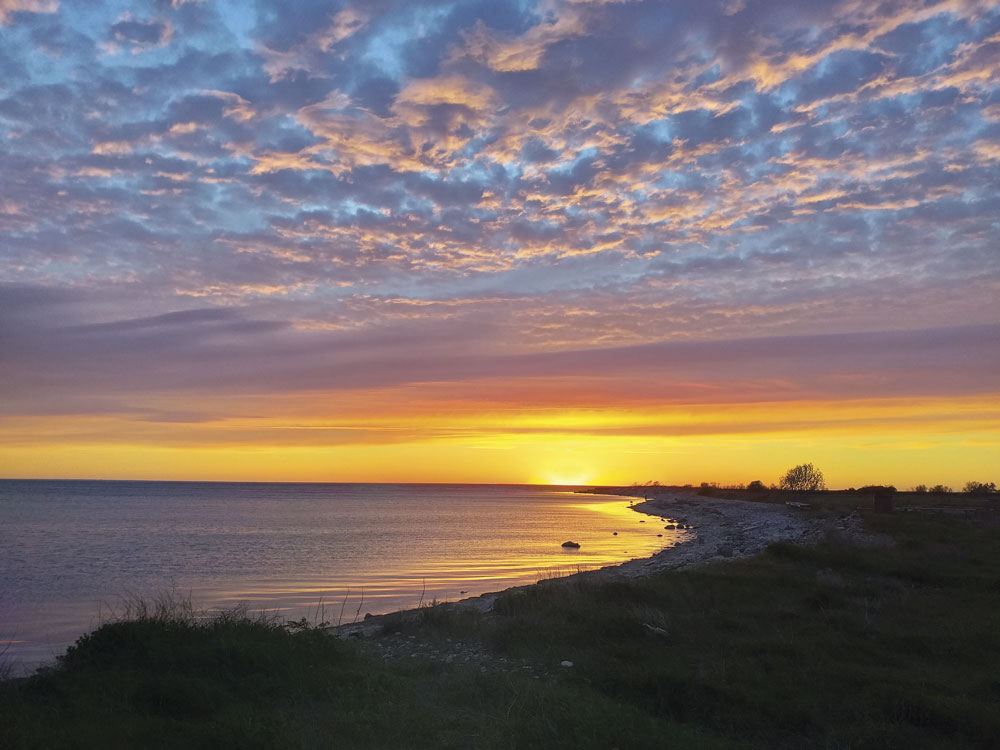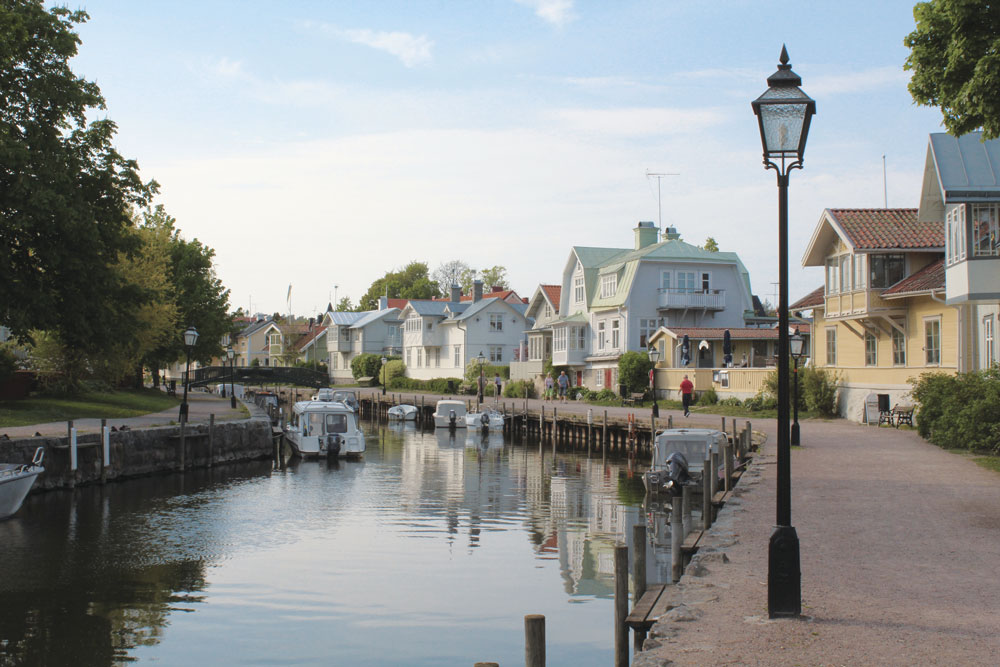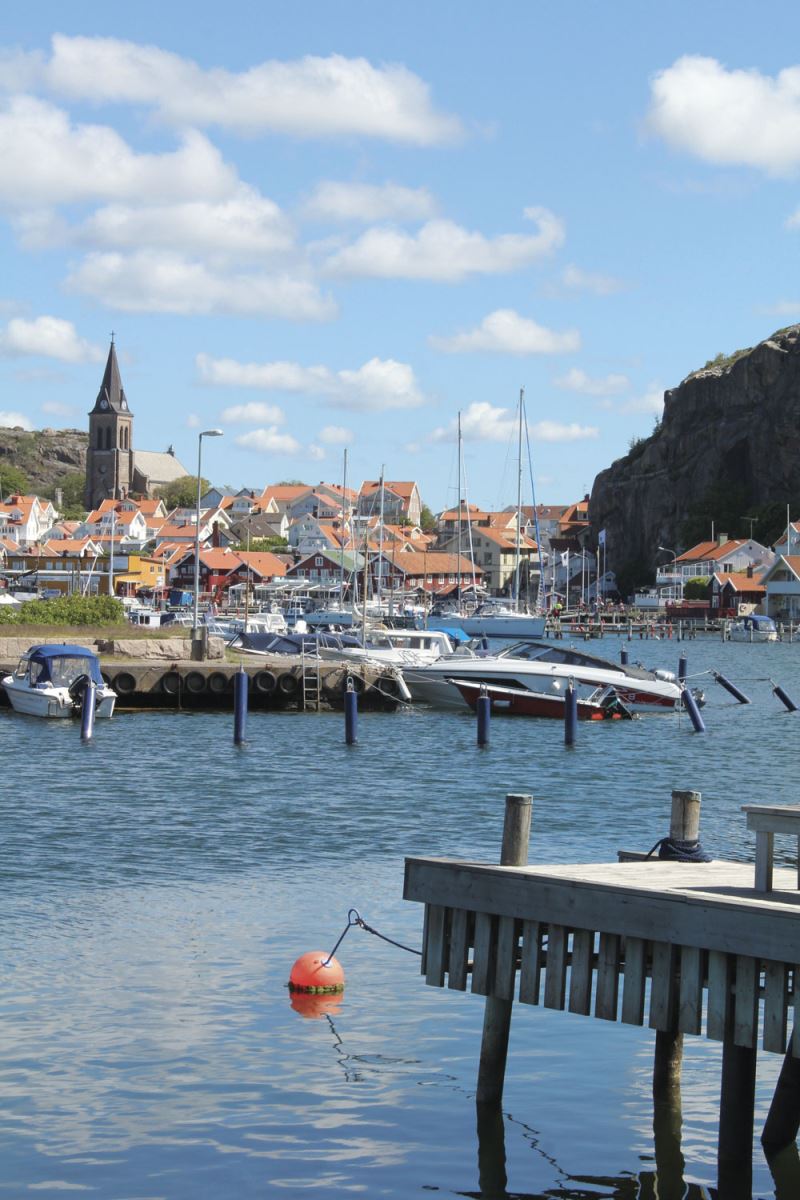Motorhome travel: Sweden, a motorhome-friendly haven
Words & Photos: Tim Walker
This feature was written prior to the coronavirus pandemic. We are publishing it for your enjoyment and to help you plan future trips. Readers must follow the latest government advice before leaving their homes - gov.uk/coronavirus
There can be few more spectacular ways to enter a country than across the Öresund Bridge into Sweden, driving a motorhome.
My wife, Jen, and I had somewhat randomly chosen our first overseas destination based on our love of the Scandi-noir television series The Bridge. As we drive across from Denmark one sunny morning, the haunting theme tune Hollow Talk playing at full volume, our hearts singing, we couldn’t have been happier.
On the other side, we find the perfect spot to take photos of the bridge sensuously curving back towards Copenhagen.
We tear ourselves away from this lovely view and head north, dipping into Malmö briefly for a stroll in pretty Kungsparken, with its waterside paths and lawns white with daisies, before continuing up the west coast to Falkenberg. This is a popular seaside town but, out of season, it feels a little dull.
However, the town’s ställplats, at Lövstavikens marina, more than compensates. It is beautiful with its rust-red huts, neat lines of sailing boats and a trio of wind turbines lazily turning in the breeze.
This is the first of many marina and harbour stopovers. The Swedes realise that motorhomers and sailors have the same needs and everywhere is geared up for both, with all the necessary services and, quite often, showers as well.
It is here that we are befriended by Arne, an enthusiastic Swede, who takes us under his wing after seeing me nearly knock myself out with my own bike rack. Surely, anyone this incompetent clearly needs all the help he can get.
Arne gives us endless guidance on what to do and where to stay, continuing with text messages until we are back in England. “You must visit Ullared. Follow us,” he commands on the day we are leaving the marina. So, we find ourselves spending the morning at Scandinavia’s largest discount store.
As someone who is not drawn to shopping, this is not a natural choice for me, but it is quite a phenomenon. On a busy day it gets 25,000 visitors and the queue when the doors open can be a kilometre long. It is the subject of a fly-on-the-wall documentary series now in its tenth season so that, rather bizarrely, many of the shelf stackers are household names in Sweden. “That’s Sven,” Arne tells me. “He’s in charge of the bread.”
We say a fond farewell to Arne and his wife and set off east through the forests to the glass factory at Kosta (Kosta Boda), perhaps the most famous of all Sweden’s glassworks.
It is a relaxed place and we are allowed to wander unaccompanied around the slightly archaic factory, watching the skilled workers brandishing molten glass on poles and creating fancy vases, wine glasses and even gear knobs for luxury Volvo cars.
The craftsmanship is wondrous, but what is more astonishing is the complete absence of modern health and safety regalia – not a helmet, hi-vis jacket, protective glove or eye guard in sight. Equally captivating is the small gallery of glass art where we spend a happy hour taking arty photos and trying not to break anything.
The island of Öland on the Baltic coast, reached by a 6km (3½ mile) causeway, is our next port of call. At the southern end we find the harbour ställplats of Grönhögen (another Arne recommendation), where we pitch looking over the sea back towards the mainland. A little tern fishes frenetically in front of us, skeins of geese fly north all evening and we are treated to a superb vermillion sunset.

The next morning, in spite of near gale-force winds, we cycle with the wind on our backs to the nature reserve at Ottenby on the southern tip, where there is much excitement among the birdwatching community about a very rare greenish warbler taking shelter in the lighthouse garden after being blown in on the Baltic winds. I marvel at the trusting Swedes who have left their expensive telescopes on tripods outside the small café.
It is too windy to birdwatch, but we peer at the dozen or so seals basking on the rocks just offshore before girding our loins for the exhausting cycle ride back. Halfway, we huddle in the shelter of a large rock munching our picnic lunch whilst watching a small herd of roe deer grazing just 50 metres away. A brown hare lollops past too.
We spend a few more days on this gentle island with its hundreds of wooden windmills, staying next on the edge of a swan-filled lagoon at Böda Hamn, walking in a ‘troll forest’ at the northern end with its twisted pines and visiting the superb modern Vida art gallery near Borgholm.
On our final morning we wander around a delightful gardening school and nursery called Capellagården.
Back on the mainland we visit the impressive castle at Kalmar with its moat, drawbridge, fairytale turrets, dungeons and some splendid state rooms.
The next few days are spent wending our way north along the coast towards Stockholm and we head for the town of Nyköping, which has a small, free municipal ställplats near the harbour. From here there is a delightful walk along the river to town.
The following morning, we visit the helpful tourist information centre and are told that we are too early for the boat trips to the archipelago. Instead, we can drive to the nature reserve at Stendörren to get a taste of it.
We spend a happy few hours here, walking from rocky islet to rocky islet, connected by ‘rope’ bridges, glimpsing sparkling water through the pines and the occasional sailing boat and enjoying a close encounter with two reddish black squirrels with tufty ears before they skitter away.
The tourist office also recommended the town of Trosa to us. This proves to be another gem, with its pretty canal lined with small boats and well-preserved wooden houses painted in pastel colours, perfect for a sunny stroll from our marina ställplats.
We finally arrive in Stockholm, opting for the noisy (but conveniently located) Tantolundens ställplats rather than one of the leafier campsites further out on the shores of Lake Mälaren. Judging by the online reviews, Tantolundens (and its big ‘sister’, Långholmen) are not everyone’s cup of tea, but we slept well in spite of the adjoining rail track and inner ring road.
Of our many highlights, the outright winner is our first afternoon in Stockholm. We are blessed with the warmest, sunniest, day of our trip and Stockholm is buzzing with that early summer joy that only people from northern climes experience.

The city is perfectly set up for cycling, with separate lanes for bicycles just about everywhere, but it is not for the faint-hearted because the locals cycle at such a lick.
We nevertheless survive our exploratory cycle ride, which takes us alongside the numerous waterways, past fine Scandinavian buildings and splendid sailing boats and, eventually, to the large leafy park of Djurgården. Here we stop for an early evening drink in a smart café/restaurant full of locals enjoying their outdoor dining. It feels very civilised.
The weather has turned damp so we opt to walk around the residential district of Södermalm, which gives us a flavour of real Stockholm life and an opportunity to visit the photography museum, Fotografiska.
Next morning, the weather has picked up so we join the throngs shuffling through the narrow streets of the old town (gamla stan) for an hour before boarding a steamer ferry to Vaxholm out on the famous archipelago with its 30,000 islands.
Once back on dry land, we find our way to the Moderna Museet, which is excellent if you are not ‘allergic’ to modern art! Alongside the Picassos, a nice Matisse and some photographs by Henri Cartier-Bresson, there is some pretty ridiculous stuff.
Our favourite is a Japanese artist who built a wall from brown paper and then hurled himself through it several times “in an artistic effort to address the relationship between performance and object”.
On our final morning in Stockholm we opt to drive out west to the royal palace – with its ornate interior and Versailles-style gardens – at Drottningholm, on the shores of Lake Mälaren. From here it is a short hop to our next destination – Uppsala.
We make the best of damp weather on the Sunday by visiting not one, but two, houses where the famous botanist, Linnaeus, lived, as well as the important viking site of Gamla Uppsala with its chain of enormous burial mounds.
Monday is not much brighter, but we brave showers to cycle along the river into the city. Although Uppsala is an ancient university town, it doesn’t have the grandeur of Oxford or Cambridge. It does, however, have the lovely Linnaeus Gardens and an enormous twin-spired cathedral, which is something to behold from inside and out.
Uppsala also has the Gustavianum building, famous for its circular gallery where – in olden days – people could watch bodies being dissected.
It is a good day’s drive through the forests to get to the west coast, so we break it up with a stop at the town of Kristinehamn on the north shore of the vast lake Vänern.
The river harbour ställplats proves to be as nice as it sounded and there is an additional treat in store for us. A sunny cycle ride along the shore of the lake brings us to a little promontory on which there sits one of Picasso’s largest works: a painted concrete, two-way-facing, native American head.
The northwest coast turns out to have the finest scenery we have encountered, with its rugged coastline of rocky islets and inlets and delightful fishing harbours.
We arrive in the evening at the attractive town of Strömstad and wild camp a few miles south near the amusingly named villages of Öddö and Daftö. We spend the next day meandering down this wonderful coastline, dipping into the small towns of Fjällbacka and Smögen.

Out of season, Fjällbacka, with its beautiful harbour front of old wooden houses painted in pastel colours, red fishermens’ huts and rocky islands, has a far-flung feel like the Faroe Islands. We suspect that, in summertime, it will be busy.
Smögen feels over-developed as we drive in but, hidden away, there is a delightful tiny creek/harbour lined with painted fishing huts. It is impossibly picturesque.
Sadly, we have to cut this meander short and push on for Gothenburg, which, unlike the rest of Sweden, seems to be rife with thievery if the online reports are to be believed.
We opt for the safest-sounding campsite (Liseberg) and take advantage of the sunny evening to bike into the centre, about 20 minutes away. Gothenburg is not as attractive as Stockholm or Malmö but the canal, the old part (called Haga) and the university area are appealing.
On our last day we head to the excellent Röhsska museum of design and craft. The top floor is given over to Chinese design dating back 4,000 years and examining its influences on Swedish design. The ground floor has an excellent exhibition of Swedish design over the last 200 years. It feels like a luxury to have a whole day to enjoy it... We must do this more often.
Motorhome stopovers (Stallplats) we stayed at in Sweden:
Lovstavlkens
Sanddynevägen 58, 31132 Falkenberg
Tel: 0046 346 711707
Website: lovstaviken.se
Open: All year
Price: Two adults, pitch and electric: 180SEK (£15.46)
Grönhögens Hamn
3 Fiskaregränd, 38065 Grönhögen
Tel: 0046 702 769664
Open: All year
Price: Two adults, pitch and electric: 200SEK (£17.18)
Böda Hamn
42 Bödahamnsvägen, 38773 Böda
Tel: 0046 725 010645
Open: All year
Price: Two adults, pitch and electric: 190SEK (£16.32)
Nyköpings Hamn
14 Spelhagsvägen, 61131 Nyköping
Tel: 0046 155 248200
Open: All year
Price: Free (48 hours maximum)
Trosa Gästhamn
Uddbergagatan 1, 61930 Trosa
Tel: 0046 702 273631
Open: All year
Price: Two adults, pitch and electric: 340 SEK (£29.02)
Tantolunden Husbilscamping
Ringvägen 24, 11867 Stockholm
Tel: 0046 86 691890
Website: husbilstockholm.se
Open: All year
Price: Two adults, pitch and electric: From 320SEK (£27.48)
Kristinehamn
Hamnvägen 9, 68130 Kristinehamn
Tel: 0046 705 882827
Website: kristinehamnsgasthamn.se
Open: All year
Price: Two adults, pitch and electric: 250SEK (£19.98)
Liseberg Ställplats
Skatåsvägen 25, 40121 Gothenburg
Tel: 0046 31 400100
Website: liseberg.se
Open: 1 May-5 November
Price: Two adults, pitch and electric: From 240 SEK (£20.61)
The journey to Sweden
From the Harwich to Hook of Holland ferry, we passed through The Netherlands and northern Germany, taking the ferry from Puttgarden to Rødby in Denmark and spending a few days in Copenhagen before crossing the Öresund bridge to Sweden. We took the ferry from Gothenburg-Frederikshavn and travelled home via Jutland, Hook of Holland and Harwich. We spent 19 days touring Sweden in May and covered 3,138 miles, of which the Swedish leg was 1,398 miles.
The costs (Sweden only)
Fuel Average 32.7mpg (SEK3,132) £269
Öresund bridge toll (DKK352) £44.44
Ferries Harwich-Hook of Holland return ferry (£235) Scandinavian ferries one-way:
Puttgarden-Rodby and Gothenburg-Frederikshavn (€198) £415.18
Ställplats fees (SEK2,810) £241.35
Total costs £969.97
Top Sweden travel tips
For the Öresund bridge crossing, it's worth investigating whether it's cheaper to buy a BroPass (it wasn't for us), if you are making a return trip, for example
Website: oresundsbron.com
At the time of our visit, Denmark was much more expensive than Sweden except for diesel, which was significantly cheaper in Denmark.
In most places, a standard three-pin EHU works, but it's worth taking a two-pin converter, too. We needed one on a couple of occasions.











Recent Updates
Engine management lights: all you need to know
What is the engine management light? What does it mean, and what do I have to do? ...
Motorhome air suspension: all you need to know
Motorhomes are heavy and the additional weight of equipment and height of the bodywork can increase the loads ...
Motorhome WiFi: how to get better motorhome internet
Staying connected on the move is more and more essential, so relying on campsite WiFi isn't an option – here ...
A class of their own - our guide to A-class motorhomes
Thinking of trading up to an A-class, or even going straight to the top of the motorhome tree? We guide you ...
Explore overseas on a motorhome dream tour
Enjoy exotic travel in a campervan or motorhome by hiring, swapping with someone else or exporting your ...
Motorhome water systems: everything you need to know
On-board water is an important part of every motorhome – here’s everything you need to know ...
Campervanning in Europe: what you need to know
Whether you're planning a leisurely drive through the French countryside, navigating bustling city streets in ...
Campervan security: all you need to know
With thefts on the increase, it’s important to know how to keep your campervan secure and prevent campervan ...
Campervan furniture: everything you need to know
Our campervan experts guide you through all the essentials for your campervan, including tables, chairs, ...
Campervan finance: how to fund your purchase
Here we look at the different types of campervan finance available, to help you decide what’s the best option ...
Other Articles
Britain’s best used motorhomes
Want a great motorhome without paying the premium for a new one? Here's a guide to the best you can get in the pre-owned market for each layout, ...
Which motorhome? Choosing the perfect motorhome for you
Choosing a motorhome or campervan is one of the biggest buying decisions you’ll ever make, so it's important ...
Campervan washroom essentials: stay fresh on the road
Our guide will take you through the campervan washroom essentials you'll need so you're well-prepared for ...
Dogs in campervans: all you need to know
Follow our advice and your dog will enjoy campervanning as much as you do ...
Electric campervans: all you need to know
Our guide will take you through everything you need to know about electric campervans and what the future ...
Motorhome electrics: a complete guide to your motorhome electrical set-up
Motorhome electrics can dramatically enhance the convenience and comfort of your vehicle – but they can be ...
Lighting for campervans: all you need to know
We guide you through all the lighting options available for you and your campervan, including interior ...
Electric bikes for motorhomes: our ultimate guide
Read our comprehensive guide to electric bikes for motorhome owners, helping you add electric power to your ...
Our guide to 'cheap' motorhomes in 2024
If you're on the hunt for an affordable new motorhome, this is the best place to start – we've rounded up a ...
Campervans in winter: all you need to know
Here's your guide to preparing your campervan for the colder months, whether you will be using it or putting ...